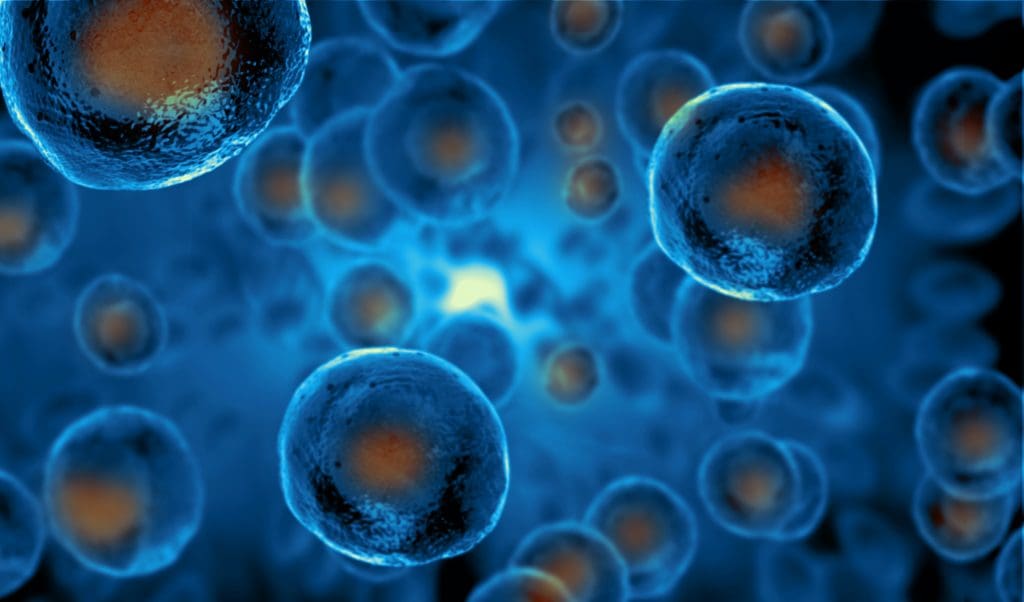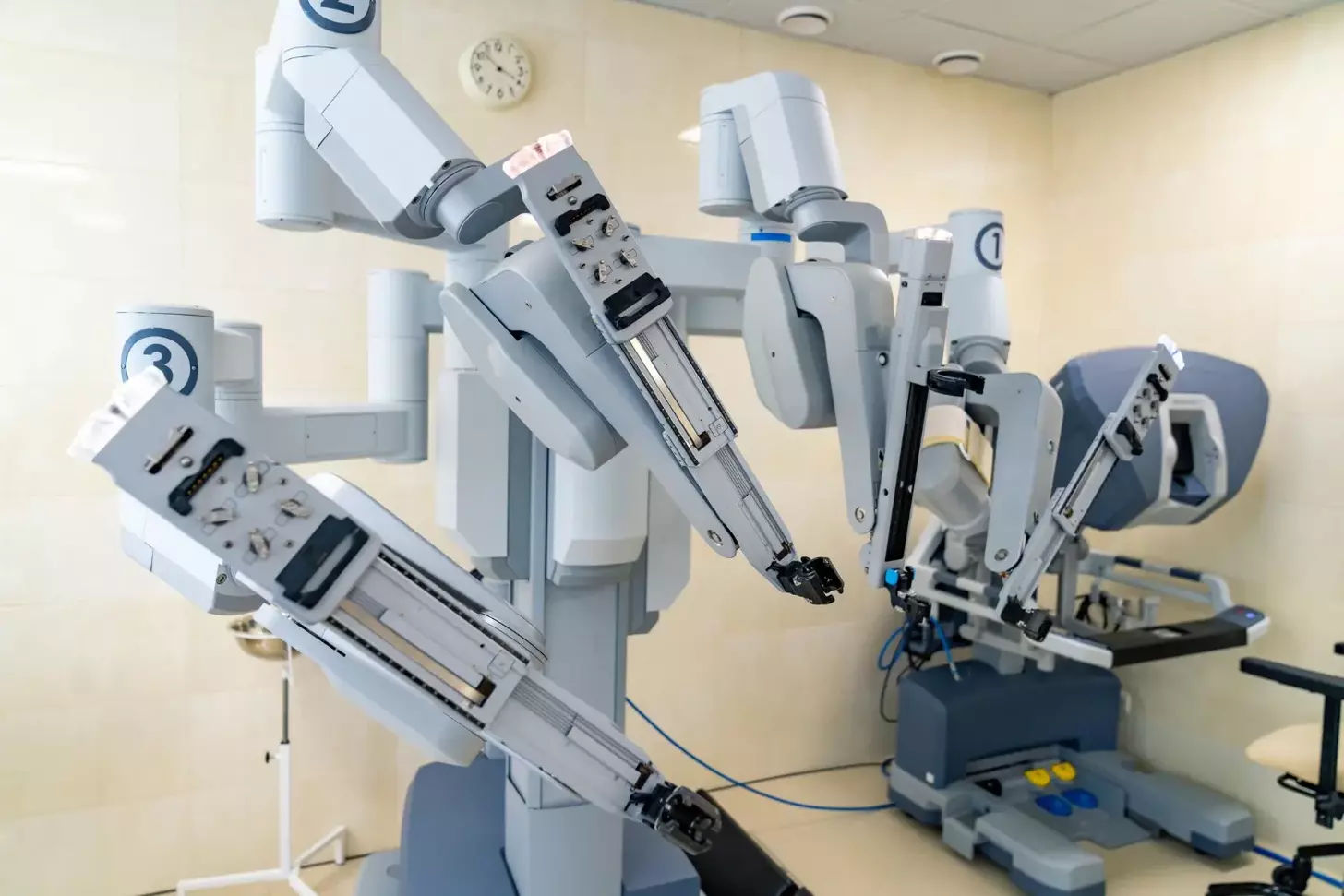Last Updated on September 18, 2025 by Hozen
Stem cell therapy is seen as a new hope for medicine. Scientists are looking into how it can help understand diseases and grow healthy cells to replace damaged ones.
It’s important to know these challenges to move forward with regenerative cell therapy. As research grows, we need to look at both the good and bad sides of using adult stem cells in medicine.
Key Takeaways
- The promise of stem cell therapy in treating diseases is huge.
- Adult stem cells have limitations that need to be understood.
- Regenerative cell therapy is advancing with ongoing research.
- Understanding the drawbacks of adult stem cells is key.
- The benefits and limitations of stem cell therapy must be examined.
The Fundamentals of Stem Cell Biology

Stem cell biology is key to understanding stem cell therapy’s possibilities and limits. It focuses on the unique traits and roles of stem cells.
What Are Stem Cells and Their Key Properties
Stem cells are cells that can grow into different types of cells. They have two main abilities: self-renewal and differentiation. Self-renewal keeps their numbers steady, while differentiation lets them become specialized cells.
These abilities are vital for growth, repair, and regeneration. Classification of Stem Cell Types
Stem cells are divided into types based on where they come from and what they can become. The main types are:
- Embryonic stem cells, from embryos
- Adult stem cells, in adult bodies
- Induced pluripotent stem cells (iPSCs), made from adult cells
| Stem Cell Type | Origin | Differentiation Ability |
| Embryonic Stem Cells | Embryos | Pluripotent |
| Adult Stem Cells | Adult Tissues | Multipotent |
| Induced Pluripotent Stem Cells (iPSCs) | Reprogrammed Adult Cells | Pluripotent |
Adult Stem Cells: Definition and Natural Functions
Adult stem cells, or somatic stem cells, live in adult bodies. They are multipotent, meaning they can turn into a few types of cells. For example, bone marrow stem cells can become different blood cells.
Adult stem cells help keep tissues healthy and fix damaged ones. They are essential for the body’s ability to heal and grow throughout life.
Biological Limitations of Adult Stem Cells
Adult stem cells face big challenges when used for therapy. They are great for fixing tissues and growing new cells. But, they have limits that make them less effective for treatment.
Restricted Differentiation
Adult stem cells can’t change into many types of cells like embryonic stem cells can. For example, stem cells from bone marrow can turn into bone, cartilage, or fat cells. But, they can’t become other types of cells.
Tissue-Specific Constraints
Adult stem cells also have limits based on where they come from. Stem cells from different tissues work differently. Some may grow less or age faster.
- Different tissues have different stem cell abilities
- Stem cell availability changes with the tissue
- The quality of stem cells depends on the tissue
Cellular Aging Effects
As people get older, their stem cells change. These changes make them grow less and work less well. They also die more easily.
“Aging makes stem cells less able to fix and grow, which hurts their use in treatments.”
This shows we need ways to make stem cells work better and last longer for treatments.
Challenges in Harvesting and Expanding Adult Stem Cells
Harvesting and expanding adult stem cells is tough. They are key in regenerative medicine, helping to fix or replace damaged tissues. But, there are big hurdles to overcome.
Difficulty in Isolation from Tissues
Getting adult stem cells from tissues is hard. It means taking them from the patient’s own body, like bone marrow or fat. This can be painful and often doesn’t give many stem cells.
A study in the Journal of Translational Medicine says, “Getting adult stem cells from tissues is a complex process. It needs special techniques and tools.”
Limited Proliferation Capacity in Culture
Adult stem cells don’t grow much in a lab. This means there aren’t enough cells for treatments. It’s hard to get the results needed for patients.
| Cell Type | Proliferation Capacity | Clinical Application |
| Adult Stem Cells | Limited | Tissue Repair |
| Embryonic Stem Cells | High | Regenerative Medicine |
Technical Barriers to Scale-Up Production
Scaling up adult stem cells for use is very hard. It needs to keep cells alive, be clean, and meet rules.
“Scaling up adult stem cells needs better bioprocessing tech to get past current limits.”
” Expert Opinion
In short, adult stem cells are promising but hard to get and grow. Solving these problems is key to using them fully in medicine.
Age-Related Decline in Adult Stem Cell Quality
Adult stem cells face challenges as we age. Their quality and number can drop. This affects how well our bodies can repair and grow tissues.
Quantitative Reduction with Advancing Age
As we get older, we have fewer adult stem cells. This quantitative reduction makes it harder for our bodies to heal and grow. It’s a big reason why we feel older.
Research shows that fewer stem cells are linked to less gene activity. This decline is due to aging, stress, and changes in the stem cell environment.
Accumulation of Genetic Mutations Over Time
Older stem cells also get more genetic mutations. These mutations can make cells work poorly. They can come from DNA mistakes, environmental factors, or poor DNA repair.
These mutations in stem cells are a big worry for treatments. They can make cells not work right. This could even cause harm.
Implications for Older Patients Needing Treatment
Older patients face challenges with stem cell treatments. Their stem cells may not work as well. This is because they have fewer and less effective stem cells.
For older patients, other treatments might be better. This includes using stem cells from donors or creating new stem cells from adult cells. Knowing how aging affects stem cells is key to better treatments for older people.
Disease States Compromising Adult Stem Cell Function
Adult stem cells can be affected by disease. Some conditions make them unsuitable for treatments using one’s own cells. Chronic diseases and genetic disorders can harm these cells’ health and function.
Impact of Chronic Diseases on Stem Cell Viability
Chronic diseases like diabetes and heart disease can harm adult stem cells. Studies have shown that these diseases can make stem cells less able to grow and change into different cell types.
The table below shows how different chronic diseases affect adult stem cells.
| Chronic Disease | Effect on Adult Stem Cells |
| Diabetes | Reduced proliferation and differentiation capacity |
| Cardiovascular Disease | Impaired angiogenesis and vascular repair |
| Chronic Kidney Disease | Dysregulation of stem cell homing and engraftment |
Genetic Disorders Affecting Stem Cell Quality
Genetic disorders can harm the quality and function of adult stem cells. For example, genetic mutations can cause stem cell exhaustion or wrong cell types. Conditions like Fanconi anemia and Dyskeratosis congenita show how genetic issues can affect stem cells.
Contraindications for Autologous Treatments
Some diseases or genetic conditions mean using one’s own stem cells for treatments is not safe. Deciding to use autologous stem cells depends on the patient’s health and genetic makeup.
Knowing these limits is key to creating stem cell therapies that work for each person’s health.
Embryonic Stem Cells: Superior Alternatives in Certain Contexts
Research shows that embryonic stem cells have many benefits. They can differentiate into many cell types and grow in large numbers. These traits make them valuable for stem cell therapy.
Enhanced Differentiation Capabilities
Embryonic stem cells can turn into many different cell types. This is key for treating diseases and injuries. They can replace damaged tissues, unlike adult stem cells, which have limited abilities.
Greater Expansion Potentials for Large-Scale Applications
These stem cells can grow in large numbers. This is important for treating complex diseases. They can be cultured in big quantities for therapy.
Uniformity Advantages for Research and Therapy
Embryonic stem cells are also very consistent. This is important for research and treatment. Their reliability means treatments are more predictable and safer.
In short, embryonic stem cells have big advantages over adult stem cells. They can differentiate well, grow in large numbers, and are consistent. These traits make them a powerful tool in stem cell therapy, opening up new ways to treat diseases.
Induced Pluripotent Stem Cells: Overcoming Adult Stem Cell Limitations
The discovery of induced pluripotent stem cells has changed stem cell biology. It offers a new way to use adult stem cells. Induced pluripotent stem cells (iPSCs) are made by changing adult cells into a state like embryonic stem cells. This breakthrough has opened new doors for research and treatments.
Development and Characteristics of iPSCs
iPSCs are made by adding special genes to adult cells, like skin or blood cells. These cells then change into a pluripotent state. This lets iPSCs turn into almost any cell type, just like embryonic stem cells. Studies show that fasting can make stem cells work better, showing iPSCs’ great promise in treatments.
Key Characteristics of iPSCs:
- Pluripotency: Ability to differentiate into any cell type
- Self-renewal: Capacity to proliferate without differentiating
- Genetic Stability: Generally maintain the genetic makeup of the original somatic cells
Comparative Advantages Over Adult Stem Cells
iPSCs have big advantages over adult stem cells. They can turn into any cell type and grow more. Adult stem cells can only turn into certain cell types. This makes iPSCs great for making cells from different parts of the body.
| Feature | Adult Stem Cells | iPSCs |
| Differentiation Ability | Limited to specific lineages | Pluripotent, can differentiate into any cell type |
| Proliferative Capacity | Limited proliferation capacity | High proliferative capacity, can be expanded indefinitely |
Breakthrough Applications Not Possible with Adult Stem Cells
iPSCs have let researchers study diseases better and find new treatments. For example, iPSCs from patients with genetic diseases can help understand and treat these diseases. This was not possible with adult stem cells.
“The ability to generate patient-specific iPSCs has revolutionized the field of personalized medicine, allowing for tailored therapeutic strategies that were previously unimaginable.”
In conclusion, induced pluripotent stem cells are a big step forward in stem cell biology. They offer a powerful tool for research and treatments. Their ability to go beyond adult stem cells makes iPSCs key in regenerative medicine.
Neurological Disorders: Where Adult Stem Cells Fall Short
Adult stem cells face big challenges in treating neurological disorders. This shows we need new ways to help. These disorders include neurodegenerative diseases, spinal cord injuries, and brain development issues. Each one is different and hard to treat with stem cells.
Limitations in Treating Neurodegenerative Diseases
Neurodegenerative diseases like Alzheimer’s and Parkinson’s cause neurons and glial cells to die. Adult stem cells can’t easily turn into the right neural cells to replace them. Also, the environment in these diseases often hurts the stem cells’ ability to work and survive.
Key Challenges in Treating Neurodegenerative Diseases:
- Limited differentiation of adult stem cells into neural cells
- Hostile environment that affects stem cell survival and function
- Not fully understanding the disease to target it effectively
Spinal Cord Injury Repair Challenges
Spinal cord injuries severely damage neural tissue, causing loss of motor and sensory functions. Adult stem cells are being studied for their repair abilities. But, they can’t fully regrow the complex neural tissue needed.
| Challenge | Description |
| Limited Axonal Regeneration | Adult stem cells struggle to promote significant axonal regeneration across the injury site. |
| Inhibitory Environment | The spinal cord injury environment is rich in inhibitory molecules that hinder stem cell-mediated repair. |
| Complexity of Neural Tissue | The intricacy of neural tissue is a big challenge for adult stem cells to fully restore function. |
Brain Development Disorders and Alternative Stem Cell Sources
Brain development disorders, like autism spectrum disorder, change brain structure and function in complex ways. Adult stem cells have their limits here. But, other stem cell sources like induced pluripotent stem cells (iPSCs) might be more promising.
iPSCs can come from patient cells and turn into many neural cell types. This could be a better way to treat these disorders.
The limits of adult stem cells in treating neurological disorders highlight the need for more research. We must look into other stem cell sources and treatments. This way, we can find better ways to tackle these complex conditions.
Genetic and Metabolic Diseases Requiring Alternative Stem Cell Sources
Some genetic and metabolic conditions can’t be treated well with adult stem cells. This is why we need other sources. Diseases like sickle cell anemia and cystic fibrosis, and conditions like diabetes and mitochondrial diseases, need stem cell treatments that adult stem cells can’t offer.
Inherited Disorders Where Patient’s Own Cells Are Unsuitable
Inherited genetic disorders often have mutations in the patient’s stem cells. This makes their own cells not good for transplanting. For example, in Huntington’s disease, the patient’s cells have the mutation, making them not useful for treatment.
Table: Examples of Genetic Disorders and Their Impact on Adult Stem Cells
| Genetic Disorder | Effect on Adult Stem Cells |
| Sickle Cell Anemia | Mutated hemoglobin affects cell viability |
| Cystic Fibrosis | CFTR mutation impacts cell function |
| Huntington’s Disease | Expanded CAG repeat causes cellular dysfunction |
Metabolic Conditions Requiring Non-Adult Stem Cells
Metabolic conditions, like type 1 diabetes, need stem cell treatments that can fix metabolic problems. Adult stem cells often can’t do this. But, induced pluripotent stem cells (iPSCs) and embryonic stem cells can. They can turn into functional pancreatic beta cells.
Case Studies of Successful Alternative Approaches
Many case studies show the power of using different stem cell sources for genetic and metabolic diseases. For instance, researchers have used iPSCs to study diabetes and find new treatments. They’ve also looked at using embryonic stem cells to make healthy cells for transplant in metabolic disorders.
Successful therapies using different stem cell sources show we can treat diseases that were hard to tackle before. As research gets better, using iPSCs and embryonic stem cells for treatments looks very promising.
Limitations in Stem Cell Therapy Applications for Complex Tissues
Stem cell therapy faces many challenges in complex tissues. These include issues with organ regeneration, multi-tissue engineering, and developmental biology. Organs like the liver, kidney, and heart are hard to regenerate because of their complex structure and need for blood vessels.
Organ Regeneration Constraints
Regenerating organs is a complex task. It needs the work of many cell types, growth factors, and the matrix outside cells. Adult stem cells can turn into different cell types but struggle to fully rebuild an organ’s structure.
“The regeneration of complex organs requires a deep understanding of developmental biology and the ability to replicate the intricacy of these organs.”
Today’s stem cell therapy has big hurdles to overcome for organ regeneration. For example, making a working liver or kidney needs more than just replacing cells. It also requires rebuilding the blood vessels and supporting tissue.
Multi-Tissue Engineering Challenges
Creating complex tissue structures is a big challenge in multi-tissue engineering. It needs the right mix of cells, materials, and growth factors arranged in a specific way.
| Tissue Engineering Challenge | Description | Potential Solution |
| Cellular Organization | Recreating the complex cellular architecture of native tissues | Use of biomaterials and bioactive molecules to guide cell organization |
| Vascularization | Establishing a functional vascular network within engineered tissues | Application of angiogenic growth factors and endothelial cell seeding |
| Tissue Integration | Ensuring seamless integration of engineered tissues with host tissues | Use of compatible biomaterials and controlled release of growth factors |
Developmental Biology Considerations
Understanding developmental biology is key to improving stem cell therapy for complex tissues. It helps us design better treatments by learning from how organs develop.
By studying how organs form, we can make stem cell therapy more effective. This involves using specific growth factors, materials, and techniques to guide stem cell development and organization.
Clinical Outcome Variability with Adult Stem Cell Treatments
Adult stem cell treatments face a big problem: they don’t always work the same way. This issue makes it hard for these treatments to become widely accepted.
Inconsistent Therapeutic Results
One major issue is that results can vary a lot. Even with the same treatment, patients can have very different outcomes. This is due to many factors, like the type of stem cells and how each person reacts.
Several factors contribute to these inconsistent results:
- How cells are taken and prepared
- The quality and strength of the cells
- Things like age and health that are unique to each patient
Donor Variability Issues
Another big problem is the difference in stem cells from one donor to another. This affects how well the treatment works. Things like the donor’s age and health can change the quality of the stem cells.
Donor variability impacts several areas:
- How many cells are available and how well they survive
- How well the cells can change into different types of cells
- How well the cells match with the person getting the treatment
Standardization Problems in Clinical Settings
For treatments to work the same way for everyone, they need to be standardized. But making this happen is hard because of the many ways treatments can be done. This includes how cells are processed and how patients are cared for.
To solve these problems, we need to:
- Make and follow the same treatment plans
- Have strict checks on how cells are processed
- Train doctors and nurses well
By tackling these issues, adult stem cell therapy can become more reliable. This will help improve care and results for patients.
Regulatory and Manufacturing Hurdles Specific to Adult Stem Cells
Adult stem cell treatments face big challenges in regulation and manufacturing. These issues can affect how well and safely these treatments work.
Quality Control Challenges
Ensuring quality is a big worry with adult stem cells. The differences in donor cells and how they are processed can be a problem. Stringent quality control measures are key to solving these issues and making stem cell products reliable.
Experts say, “The variety in adult stem cells means we need to test them a lot to make sure they’re safe and work well.” This shows we need better ways to check the quality of these cells.
GMP Production Difficulties
Good Manufacturing Practice (GMP) is vital for the quality and safety of stem cell products. But, following GMP rules is hard for adult stem cells. GMP production needs careful planning and doing to meet the rules.
- Creating standard ways to get and grow cells.
- Putting in place strong quality checks during making.
- Following rules for GMP places.
Regulatory Pathway Complexities
Getting adult stem cell therapies through the regulatory process is tricky and different in each place. Regulatory frameworks are made for many products, making it hard to set clear rules for stem cell treatments.
“The rules for stem cell therapies are changing, with efforts to make approval paths clearer.” This change is important for making stem cell treatments safer and more effective.
In summary, tackling the challenges in regulation and making adult stem cells is key to improving stem cell therapy. By focusing on quality, GMP, and navigating rules, we can get better and safer treatments.
Economic Factors Favoring Alternative Stem Cell Types
Economic factors are key in choosing alternative stem cell types over adult stem cells. The decision on which stem cells to use for treatments is influenced by cost, research investment, and long-term healthcare system impact.
Cost-Benefit Analysis Across Stem Cell Types
Doing a thorough cost-benefit analysis is vital for understanding the economic value of different stem cell types. Types like induced pluripotent stem cells (iPSCs) and embryonic stem cells are cost-effective and have great therapeutic promise.
Cost Comparison: Getting and growing adult stem cells is expensive because of the complex process and their limited growth. On the other hand, alternative stem cells are cheaper in the long run because they can grow more and differentiate better.
| Stem Cell Type | Cost of Harvesting | Expansion Potentia | Therapeutic Potentia |
| Adult Stem Cells | High | Limited | Moderate |
| Induced Pluripotent Stem Cells (iPSCs) | Moderate | High | High |
| Embryonic Stem Cells | High | High | High |
Research Investment Considerations
Investment in stem cell research is key to developing and using alternative stem cell types. This investment has led to big advances, making these cells more suitable for treatments.
Funding Allocation: Putting money into research on alternative stem cells has brought about major breakthroughs, like in iPSCs and gene editing. This has opened new ways to treat diseases.
Long-Term Economic Impact on Healthcare Systems
The long-term effect of using alternative stem cell types on healthcare is important. While starting costs are high, these therapies can save money in the long run by being more effective and lasting longer.
Economic Benefits: Using alternative stem cells can cut healthcare costs by reducing the need for repeated treatments and lowering the cost of chronic diseases. This can make healthcare systems more sustainable over time.
Ethical Frameworks for Stem Cell Selection in Modern Medicine
Stem cell therapy is growing, and ethical rules are key in choosing treatments. Choosing stem cells for medical use is complex. It involves many people and thoughts.
Balancing Ethical Concerns with Clinical Needs
Stem cells in medicine raise big ethical questions. The debate on using embryonic versus adult stem cells touches on moral status and patient benefits. Efficient ethical frameworks must weigh these issues against the need for effective treatments.
Different countries and cultures have varying ethical standards. This affects stem cell therapy worldwide. For example, some places allow more use of embryonic stem cells than others.
| Ethical Consideration | Clinical Need | Balancing Act |
| Moral status of stem cells | Effective treatment options | Weighing moral implications against clinical benefits |
| Potential for harm | Patient safety | Minimizing risk while maximizing therapeutic benefit |
| Benefits to patients | Improved health outcomes | Ensuring fair access to treatments |
Informed Consent and Patient Autonomy
Informed consent is vital in stem cell therapy. Patients need to know the risks, benefits, and other options. Patient autonomy means patients can make informed choices about their care.
Healthcare providers must talk clearly with patients. They should give educational materials and discuss the latest research. This helps patients understand and make decisions.
Sociocultural Perspectives on Stem Cell Sources
Sociocultural views shape how we see different stem cell sources. Some cultures might not accept embryonic stem cells due to religious or philosophical beliefs. It’s important to understand these views to make treatments that everyone can accept.
By looking at sociocultural views, we can better handle the ethics of stem cell therapy. This might mean using other stem cell sources or talking openly about stem cell research. This helps everyone understand and accept these treatments.
Conclusion: The Future Landscape of Stem Cell Therapy
The future of stem cell therapy looks bright, with new research and discoveries. Scientists are exploring different types of stem cells, like induced pluripotent stem cells.
As research grows, stem cell therapy will likely get better at treating complex diseases and injuries. The search for new stem cell sources is a big reason for this progress. It’s making treatments more powerful and flexible.
Soon, doctors will understand more about the good and bad of each stem cell type. This knowledge will help them choose the best stem cells for each patient. This will lead to better health outcomes for many people.
Stem cell therapy is set to become a key part of medicine, bringing hope to those with no other treatments. The work being done now could change the game for patients all over the world. It’s a promising future for stem cell therapy.
FAQ
What are stem cells and how do they work?
Stem cells can turn into different types of cells. They are key in growth, fixing tissues, and making new cells. You can find them in embryos and adults, and they work differently based on where they come from.
What are the limitations of using adult stem cells in therapy?
Adult stem cells can only change into certain types of cells. They are specific to certain tissues and get weaker with age. Also, getting and growing them can be hard, and they might not be as good if the person is sick.
How do embryonic stem cells differ from adult stem cells?
Embryonic stem cells can turn into any type of cell. They grow more easily and are more uniform. This makes them better for some uses than adult stem cells, which are limited to specific types.
What are induced pluripotent stem cells (iPSCs) and their advantages?
iPSCs are made from adult cells that are changed to be like embryonic stem cells. They have the same benefits as embryonic stem cells but come from adults. This makes them useful for research and treatments.
Why are adult stem cells not suitable for treating certain neurological disorders?
Adult stem cells can’t fix some brain problems because they can’t change into the right cells. They also can’t get into the brain. Other stem cells might work better for these issues.
What are the challenges in using stem cell therapy for complex tissues?
Fixing complex tissues with stem cells is hard. It’s tough to grow whole organs and deal with many tissues at once. New ways and stem cells are needed to solve these problems.
Why is there variability in clinical outcomes with adult stem cell treatments?
The results of adult stem cell treatments can vary. This is because of different donors, how treatments are done, and other issues. These problems can affect how well and safely the treatments work.
What are the regulatory and manufacturing hurdles for adult stem cells?
Making adult stem cells safe and effective is hard. There are quality control issues, making them in a controlled way, and following rules. These challenges make it tough to bring them to market.
How do economic factors influence the choice of stem cell type?
Money can play a big role in choosing stem cells. It’s about cost, how much research is needed, and how it affects healthcare costs. This can lead to using more effective and affordable stem cell treatments.
What are the ethical considerations for stem cell selection?
Choosing stem cells raises ethical questions. It’s about balancing what’s right with what’s needed, getting consent, and respecting patients. It also involves thinking about how society views stem cells. These are important for using stem cells responsibly in medicine.





